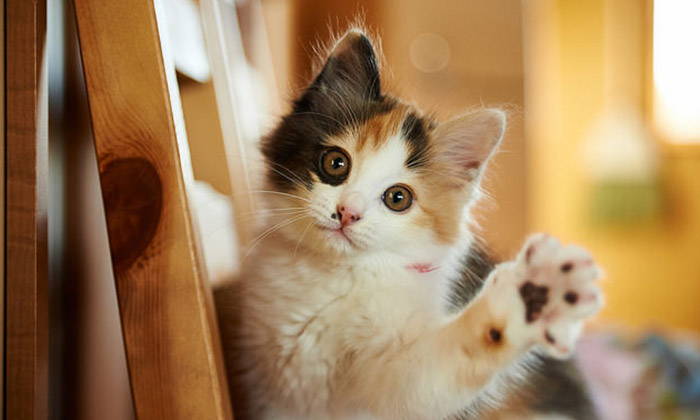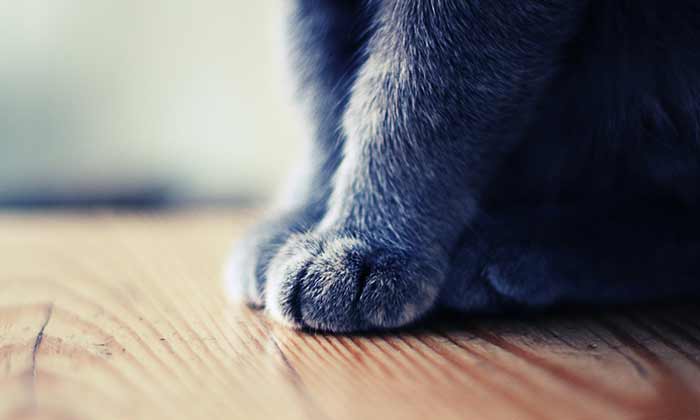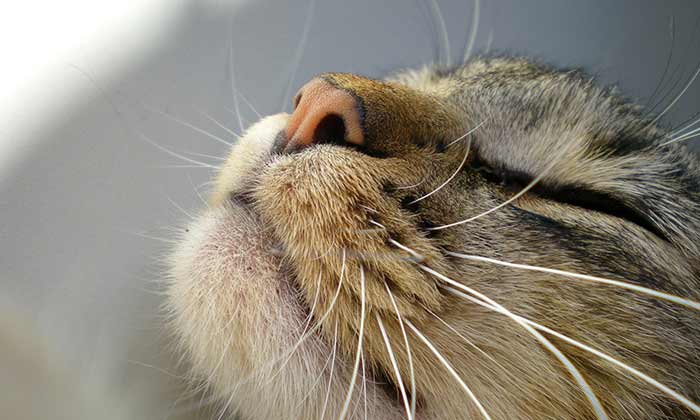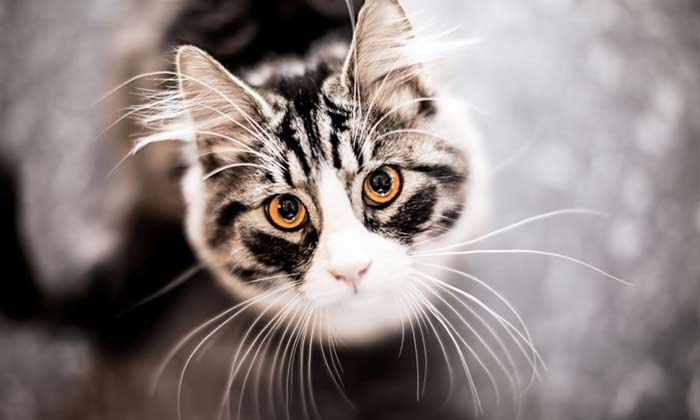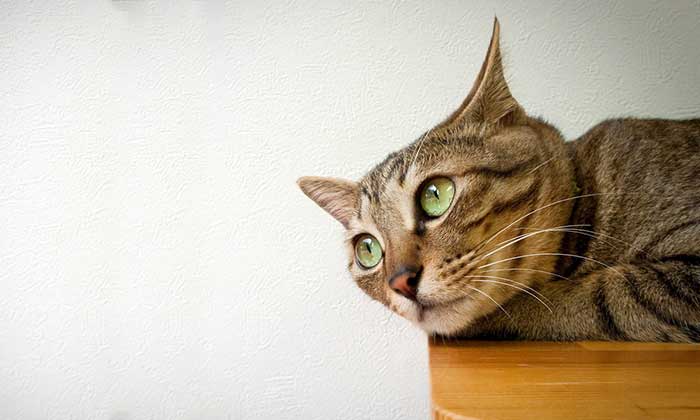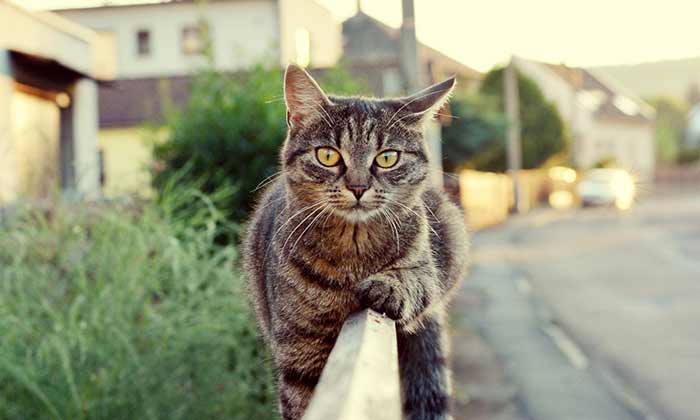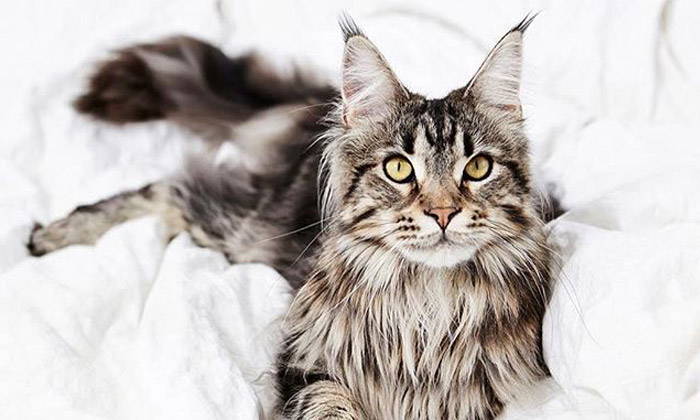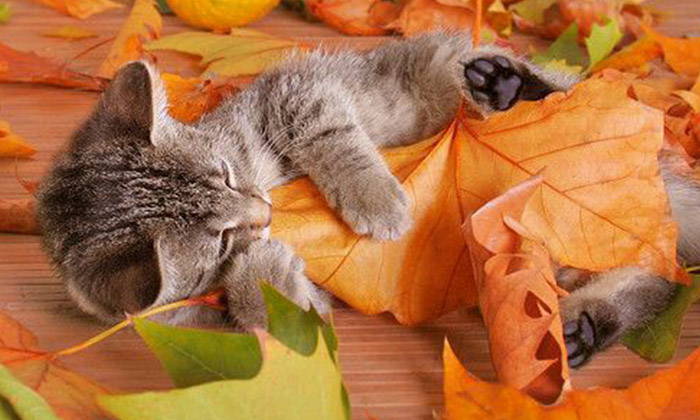Cat Claws and Cat Declawing Exlained
Cat claws are an important part of its paw and act as tools for helping a cat do its thing. While the paws of a kitten are as harmless as those of small babies, as the kitten grows, they need to be taught how to use their claws in a non-destructive manner (much like small children!). We recommend that you look into choices for training a rascal cat, rather than declawing or abandoning him. A cat’s claws are to be respected and cared for.
Claws: the Multi-Purpose Tool

Cats have inbuilt toolkits in the form of retractable claws.
Cats have inbuilt toolkits in the form of retractable claws. These are used for self-defense against their peers, dogs, and other animals, and us humans (if they perceive us as a threat). Cats also use their claws for run-of-the-mill activities: they pounce, balance, scratch and clamber onto things with their cat claws.
Although they look like they claw up your furniture out of spite, cats do this to remove a clear covering that grows over their claws, keeping them in tip-top condition and sharp for protecting themselves from attack. Sometimes you may find these coverings on the floor. The cat also strengthens and stretches its muscles on the shoulders and back by clawing.
If you shout at your cat for scratching your fancy antique tea table, you will only confuse her, as maintaining her cat claws with the most convenient item at hand is simply a natural habit.
Grooming Your Cat’s Claws
Why are claws important for cats? Is Felix playing up? You can use common psychological tricks that are also used for correcting children. Make sure to support and award good behavior, and dissuade actions slightly. Remember, keep things consistent and repeat your responses to your cat’s behavior to hit home your message when training your cat.
Helpful Hints:
Use Soft Claws, soft vinyl nail caps for your cat’s claws
Both fashionable and practical, Soft Claws are easy for you and your cat to get used to applying on its paws. The cat claws are available in bright colors as well as a natural tone, and there are four sizes to choose from. Find them at your pet supply shops.
Cut your cat’s claws
Although cutting our cat’s claws may not stop him from scratching house furniture, it will diminish the damage. You can easily trim your cat’s claws with a nail clipper, or for a small price, your vet will perform the service for you.

To attract your cat to use the post, introduce her to the post by playing with her near it.
Get or make a cat scratching post
Make or buy a scratching post that is solid enough not to fall with your cat leaning his full weight on the post, and one that is tall enough for your cat to stretch fully and scratch. Look for a rough material such as sisal covering the post.
To attract your cat to use the post, introduce her to the post by playing with her near it. You could even put some catnip on the post as well. Try scratch the post like a cat, and it might join in as well.
Look for where your cat commonly scratches things and put the scratching posts there. This could include near his sleeping area, and at room entries and exits.
Recognize Good Behavior
Make sure that you shower your cat with praise and a food reward for cooperating, such as when he scratches his post instead of the furniture or kept still when you cut his claws, or when you put Soft cat Claws on him. This way, he will relate good behavior with love and treats, and will want more of this!
Bad Cat!
Use tactics to show your cat that they are naughty, but this needs to be done immediately after their deeds. If you leave it for even several minutes, your cat won’t link your actions to his bad behavior and be confused. Do NOT punish your cat by hitting or shaking it, because your cat will see you as a bully and potentially act up even more later on.
- Briefly, shake a can with some pennies near your cat when he scratches the table leg. The loud sounds should make him stop what he is doing.
- Use a citrus spray around places where your cat likes to scratch (but test for staining first if you spray on fabric)
- Cats don’t like the sound of aluminum foil. Cover legs and arms of sofas to deter rascally cats from climbing or scratching.
- Cats also hate the stickiness of double-sided tape, so put some wide tape over problem scratching areas to give your cat the right message.
- Fill a small spray bottle with water and keep it handy. If you see your cat acting up, spray him once or twice with water. Don’t drench your cat!
- Use a commercial cat deterrent. These usually work by detecting motion and producing a puff of air and a loud noise to scare your cat. However please don’t use these on timid or nervous cats unless it is very necessary.
Make sure that you discourage your cat’s bad behavior without letting them link your presence with punishment. If this happens, they will resume bad behavior when you’re not there.
Cat Declawing: Things You Need to Know
Declawing is a big topic of debate for pet owners and veterinarians, and some countries ban this practice. Here is some information on the issue so that you can make the best choice for your pet (although I’m strictly against this practice! See below for alternatives).
How does Declawing work?

The declawing operation will involve post-operation recovery and some pain.
There are two methods for declawing: 1) Clipper or guillotine, or 2) Excision.
Guillotining cuts the P3, or last bone of the toe, in half to remove the claw itself, as well as the end of the bone. The P3 bone is where the claw grows from, and this is similar to the bone covered by our fingernails on our fingers.
Excision completely removes the P3 bone from the toe. A scalpel, or sometimes a laser is normally used for this procedure.
There is another method, tenotomy, which does not declaw the cat but instead surgically cuts the tendons for claw extension and retraction. This means the cat can no longer control their cat claws, and so you would need to make sure their nails are regularly cut so that they do not overgrow and catch into their footpads or the carpet.
When is my cat old enough to be declawed?
The declawing operation will involve post-operation recovery and some pain. This means that younger (4-8 months old) and non-overweight cats will do better with recovery and potential complications, than older and/or overweight cats. Please also not that your cat should only be declawed if it is an indoor cat.
Potential Declawing Complications
Cats can suffer from infections of the nail bed, prolonged bleeding, and injury to their footpad from surgery, and nail regrowth (if guillotine method). They might also feel pain and limp for a time.
If you notice that your cat limps or has sensitive paws weeks or months from surgery, please take him to the vet as this is not a usual recovery effect.
Humane Alternatives to Cat Declawing
Some countries have banned cat declawing or strongly discourage it. Declawing has been made illegal in England for some years, and Brazil, Australia, New Zealand, Finland, Germany, and Wales are just some of the countries that have banned declawing or only allow it under exceptional situations. Unfortunately, the United States does not share this view, and it has been up to cat lovers, Cat Fancy organizations, and veterinarians to give their voices to the message about the inhumane and superfluous nature of declawing.
Declawing: Unnecessary!
 Declawing does not usually have any medical basis unless the vet deems it necessary to prevent further suffering to a cat that has endured a badly-done declawing job with nail regrowth as a result. However, vets sometimes feel compelled to perform declawing to prevent the alternative: euthanization of a cat that causes destruction by clawing things. This is referred to by Association of Veterinarians for Animal Rights as being an “emotional hostage.”
Declawing does not usually have any medical basis unless the vet deems it necessary to prevent further suffering to a cat that has endured a badly-done declawing job with nail regrowth as a result. However, vets sometimes feel compelled to perform declawing to prevent the alternative: euthanization of a cat that causes destruction by clawing things. This is referred to by Association of Veterinarians for Animal Rights as being an “emotional hostage.”
Jonas Jurgella, the author of “The Cat Language Bible”, speaks about declawing:
“The inhumanity of the procedure is clearly demonstrated by the nature of cats’ recovery from anesthesia following the surgery. Unlike routine recoveries, including recovery from neutering surgeries which are fairly peaceful, declawing surgery results in cats bouncing off the walls of the recovery cage because of excruciating pain. Declawing fits the dictionary definition of mutilation to a tee. Words such as deform, disfigure, disjoint and dismember all apply to this surgery. Partial digital amputation is so horrible that it has been employed for torture of prisoners of war, and in veterinary medicine, the clinical procedure serves as a model of severe pain for testing the efficacy of analgesic drugs. Even though analgesic drugs can be used postoperatively, they rarely are, and their effects are incomplete and transient anyway, so sooner or later the pain will emerge.”
Remember, cat claws are the tools that a cat needs to survive. They are important for self-defense, balance, and movement. Cats need to scratch with their claws for the following reasons:
- Strengthening: When a cat pulls on his hooked claws, this is a type of resistance exercise that stretches and strengthens his muscles and joints.
- Claiming territory: Cats that scratch trees are marking their territory with scent glands on their paws. This behavior is common in outdoor cats.
- “Venting Anger”: Cats scratch more when angry or upset, although there isn’t any scientific support for this.
Declawing Is NOT Just a Nail Cutting Exercise!
Think of declawing as complete removal of both the claw and the initial joint of the cat’s toe. This stops nail regrowth from happening. Not just a nail trim! It would be like amputating all of your fingers up to the first knuckle. This is even worse for cats because they walk on what is effectively their “toes.” Cats will experience physical pain from declawing, and may also suffer from prolonged physiological and psychological effects, such as phantom limb pain.
Declawing and Litter Box Problems
Because cats will feel strong pain for some days or weeks post-surgery, they may avoid their litter box material due to its roughness against their sensitive toe stubs. This can be lessened by using a softer material such as paper-based litter.
Aggressive, Depressed, and Biting Cats
Without cat claws for self-defence, a declawed cat may resort to using biting as a way of reacting to humans or other animal threats. A cat may also become depressed and apathetic instead of fighting without claws.
Crippled Cats
Cats walk on their equivalent of toes (aka cat claws) and are known as “digitigrade.” Declawing causes toe pain, which can lead to altered gait in walking. This can cause the cat to suffer pain and stiffness in their spine, hips, and legs, much like the effects of long-term foot pain in humans. Luckily, there are some safer and less painful alternatives to declawing.
Cutting cat claws
This is an easy method to do, and you can start by trimming your cat’s nails when they are feeling sleepy, one nail at a time over a few days. This will get your cat used to having her nails cut. Gently press on your cat’s toe to extend the claw and clip it using nail clippers (available cheaply at pet stores). Just don’t clip at the dark area under the claw tip, this is quick, and it will bleed otherwise. You can ask your vet to show you how to trim your cat’s claws if you are unsure about what to do.
 Scratching Posts
Scratching Posts
Train your cat to scratch a scratching post instead of your furniture. You can buy, or build scratching posts yourself. We recommend you find posts with sisal covering, as cats like the material. Another material is cardboard, which can make for a cheap, effective scratching post. Having multiple scratching posts of different heights and surfaces will give your cat the best variety for scratching. You will also soon find out what preferences your cat has for scratching posts.
Soft Paws
This vet-developed product is made of vinyl and slips over your cat’s claws to protect surfaces from her scratching. You can get Soft Paws in clear form or colored form, which can add a touch of fashion to your cat and are easy to spot when they fall off. The covers will last 4-6 weeks and fall off as the claws grow naturally.
Feliway
This is a pheromone that mimics “friendliness,” the scent of your cat’s facial glands. Cats will not urine-mark places that they have previously marked using their facial glands, and according to some behaviorists, the same may be true of scratching, and Feliway may be a good product for this purpose.
Declawing is no longer a useful solution for curbing destructive cats, as there are more humane alternatives now available. Consider using one or more of these options to stop your cat from clawing up your furniture.

